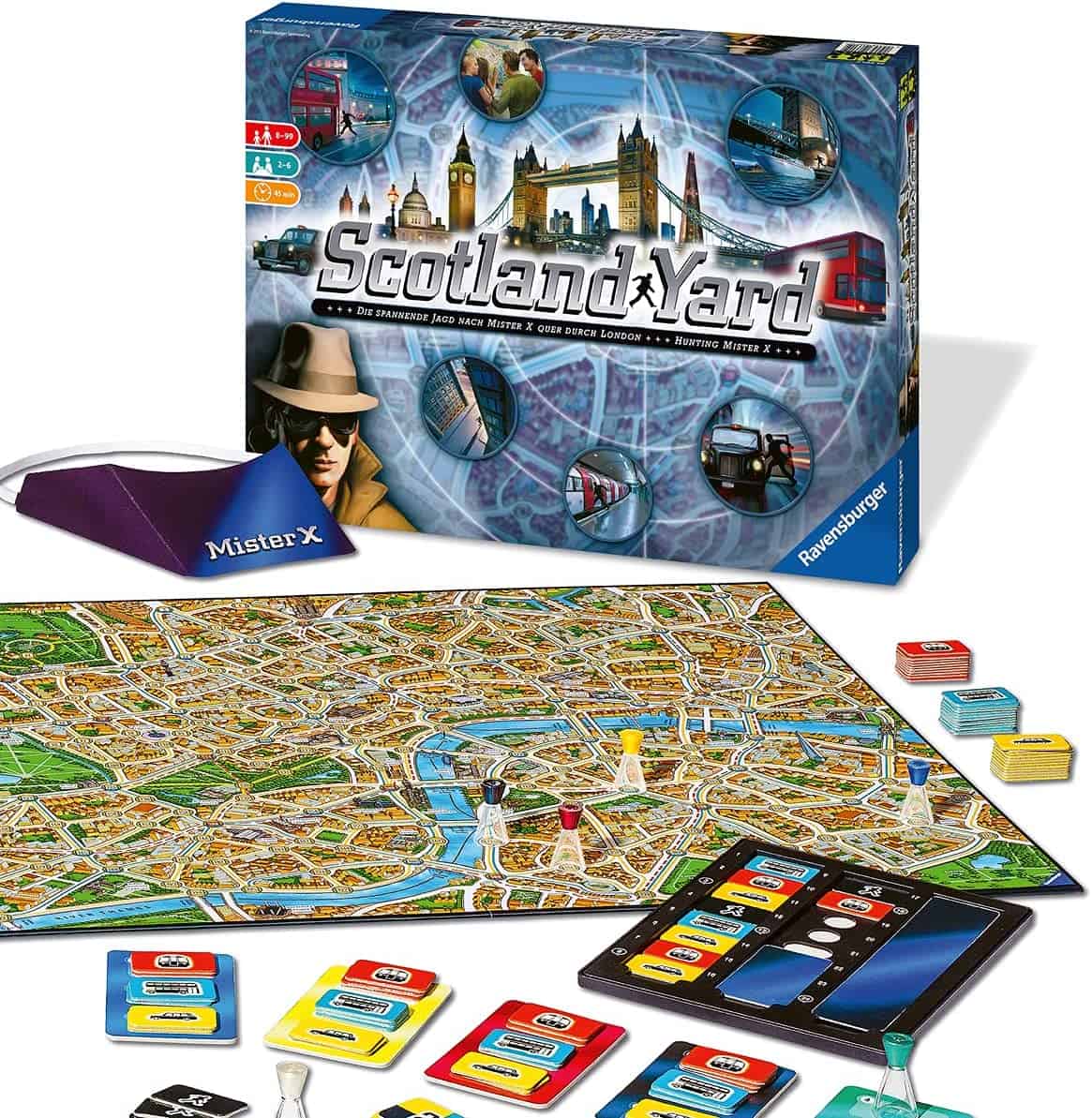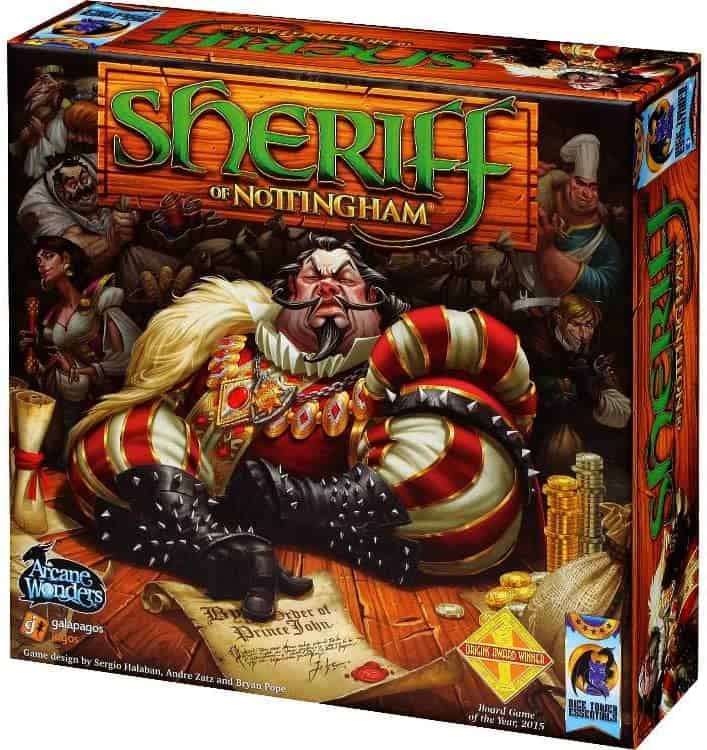You enjoyed playing Secret Hitler? Playing against your friends – seeing who can lie best? You may want to destroy some more friendships with deception, or perhaps destroying the trust of nine friends at once isn’t enough.
If you want to scratch that social deduction or backstabbing itch, I have some suggestions for you. These games aren’t the same as Secret Hitler (although, to be fair, a few are pretty close!) – but they give me the same sort of vibes.
Secret Hitler is a game with two sides; one works toward passing favorable policies while the other tries to sabotage them. Most of the games mentioned in this list work along a similar line but with different twists and other ways to push your group.
Here are my picks for the top games like Secret Hitler for your next games evening!

My Favorite Overall
I really enjoy Mafia (or One Night Ultimate Werewolf).
This might be the nostalgia glasses coming on, but looking back, it’s the game I’ve enjoyed most. As I’ll explain on this page, you can play in a huge or a small group; it works either way.
I love the betrayal you see in your friends’ eyes when they find out you’ve led them on or the satisfaction you feel if you catch the killer after several tense rounds. It’s great.
Selection Criteria for the Best Games like Secret Hitler
Secret Hitler is a competitive game where one team faces off against the other. When considering what makes each a good alternative, I’ve come up with the following list. That’s what I’m using as my selection criteria.
- ‘Social deduction’ – very Sherlock Holmes-esque, I know, but that’s what Secret Hitler is all about. Everyone has a hidden role, and you’re working to identify who’s who (in some way) while achieving objectives. A top game like Secret Hitler will embody this same spirit.
- Bluffing is technically all part of social deduction, but I enjoy a good bluffing game. In some options below, bluffing is more complex than others, but there’s almost always a way through.
- Number of (and type of) players – Secret Hitler accommodates an extensive range of players (five to ten). I’ll take this into account when listing alternatives. However, it’s also crucial that players are committed to the game. It completely ruins it when someone gets bored and reveals who they are, especially in longer games.
- General level of fun – Secret Hitler is a fun game because of its intricacy. You’ll only be tempted to play something else if it’s also enjoyable. Then again, why would you ever play something that isn’t?

My Top Picks at a Glance
Best for Replayability
I’m undecided between Betrayal at the House on the Hill and Sheriff of Nottingham.
Whereas some feel repetitive after a while, these two have much more variety. Betrayal has different scenarios, so you never know which one you will face. Sheriff is a quick but great game for a smaller group of friends or family.
I’d say Sheriff is better playing with the same friends every time, and Betrayal should be considered if you’re having a one-off games night with people outside of your usual group.
Best for Large Groups (8+ players)
If you want a game for a huge group, go with Mafia or Werewolf. These work best if you have at least some people who have played before.
Best for Mid-Sized Groups (5 to 7 players)
If you have a medium-sized group, The Chameleon, Spyfall, or Fake Artist is a good ‘thin edge of the wedge’, introducing people to the style before bringing something more thought-intensive. They’re also fun for the more experienced individuals.
These are simple games to pick up with short rounds; no one sits out waiting for the two-hour-long to finish (unlike Mafia or Werewolf).
Best for Small Groups (3 to 4 players)
If you’re only playing with two or three others, try Coup or Scotland Yard as either a 1 v 3 or a 1 v 1 v 1 v 1 game.
Each scenario gets you thinking as you guess what each player should or might be doing.
Although I haven’t included them on this list, you could also consider cooperative games. I wrote a list of the best cooperative games to play with friends elsewhere on Dice N Board – feel free to check it out for some ideas! These have as much puzzle-solving as Secret Hitler but are more about playing against the game’s mechanics than each other.
Top Games like Secret Hitler: My Picks
#10 Scotland Yard
3 to 6 players; ~45 minutes
Scotland Yard is likely the game least like Secret Hitler on my list. However, you can play with fewer people (which is why I’ve included it).
Scotland Yard is a cooperative game where most players work toward a common goal. One player, though, is working against all the rest. That player is Mr. X. Their aim is to avoid capture. They must move from location to location, with only their mode of transport being known on each step. Plus, depending on your version, you get to wear a hat! That’s fun.
The other players are Detectives attempting to work out where Mr. X is. Their objective is to travel to that same location to capture him. The Detectives have limited moves (almost like a stalemate in chess), with 22 tickets applying to different transportation methods. The Detectives will work together to trap and capture Mr. X.
After several turns, Mr. X has to reveal their location before moving on again, which might allow players to pin them down. This happens a few times throughout the game.
It’s all over when Mr. X is landed on or trapped with no moves, resulting in a Detective win. Or, if the Detectives run out of actions, Mr. X takes the victory.
Pros
- Easy to pick up and play with no high stakes
- Simple introduction to deduction games
- Lots of replayability (199 destinations!)
Cons
- If you play a few rounds, you’ll likely need to take turns as Mr. X.
- A little on the too-simple side for more experienced players.
#9 Deception: Murder in Hong Kong
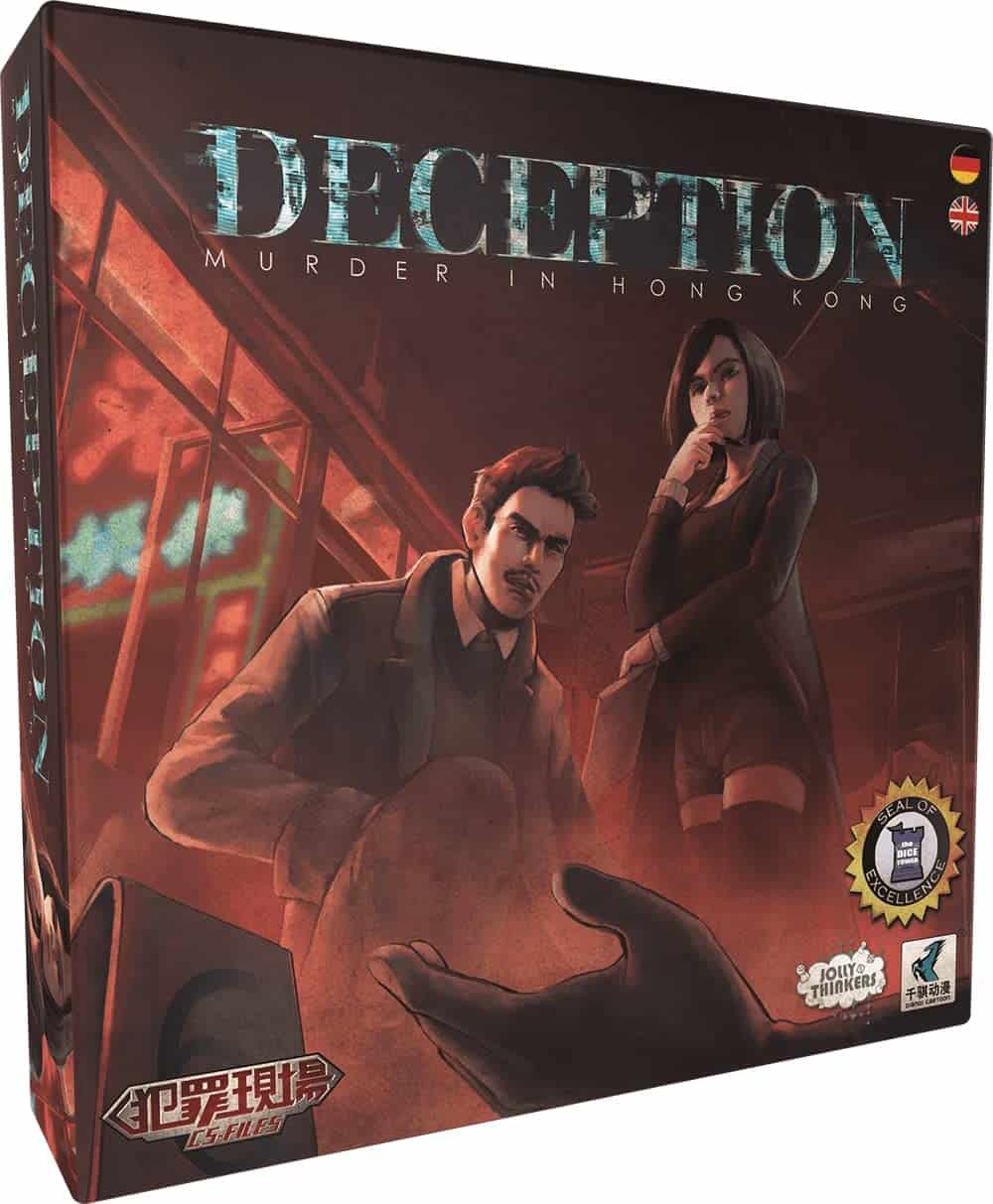
4 to 12 players; ~20 minutes
Deception is another social deduction game for between four and twelve players. This is a more straightforward game to pick up than Secret Hitler. Your aim is to work out who the Murderer is.
Each player receives a role – these are dealt out on player cards. The game starts like One Night Ultimate Werewolf (see further down). One player is assigned the role of Forensic Scientist (the only known person at the start) and is effectively the storyteller.
The players’ objective is to solve a murder committed prior to the game starting. However, one of the killers is among the Investigators. At the beginning, the Murderer (and the Accomplice in larger games) select the Clue and the Means cards for everyone else to work out.
This is where the battle of wits begins. The game is played over three rounds. The Forensic Scientist tries to guide players by placing clues for the Investigators to discuss.
The Investigators then try to solve the crime. They can no longer guess if they’re wrong, although they may remain a part of the discussion. If the guess is correct, the Investigators win.
No correct guesses in the three rounds means the Murderer wins. In larger games, they still have an opportunity to silence the Witness even if they’re discovered.
Pros
- Easy to learn
- Involves many potential ways to subtly manipulate others
- Really socially inclusive – nobody is killed off or excluded in each round
- Fast game
Cons
- Can be frustrating if the clues don’t line up easily (think when Codenames is difficult)
- The Forensic Scientist player usually makes or breaks the game
#8 The Chameleon
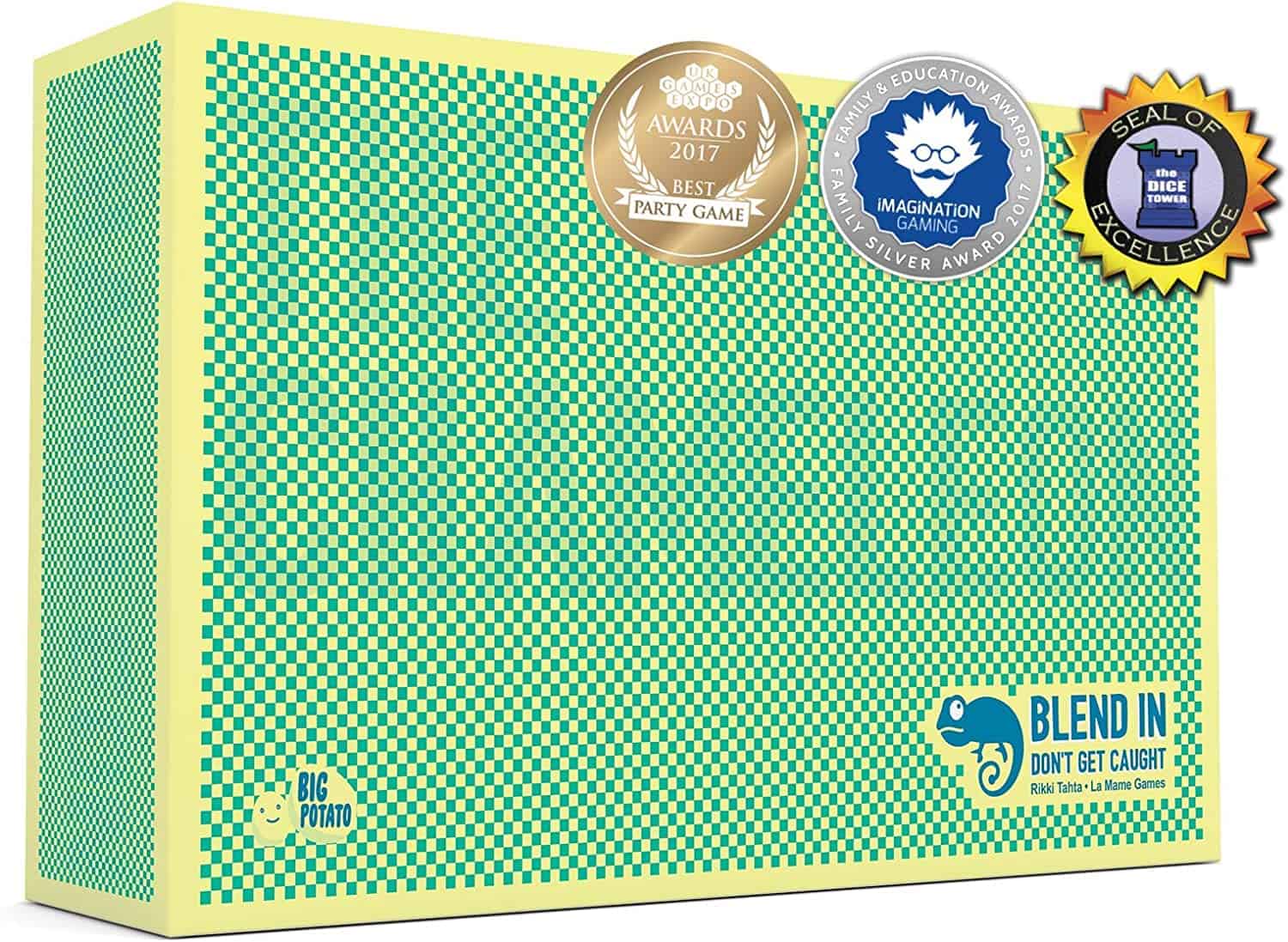
Technically, 3 to 8 players (at least 5, realistically); ~15 minutes
Have you ever wanted to be the one person without the key piece of shared information in a group but to try to act like you know what everyone else knows? Rather than struggling through an awkward Saturday night at the pub with work colleagues, you could play The Chameleon, where this is the entire point.
In the game, you’ll find Category Grid cards (or you can write your own). A pair of dice are then rolled to decide the coordinate for the round.
Everyone except the Chameleon has a key card to identify that round’s category. Each player must then say a word relating to the topic.
This is where it gets tricky. It must be obvious enough to relate to the word, so fellow players know that they’re ‘safe’, but obscure enough that the Chameleon doesn’t realize the topic. The Chameleon obviously needs to make an educated guess to blend in (ohh… “chameleon”… got it!).
After the round, discuss everyone’s contribution, and then guess who the Chameleon is as a group. If wrong, the Chameleon has won – they escaped. Correctly identifying the Chameleon means they’re revealed but have one last opportunity to succeed by guessing the category.
Score this game round-on-round if you’re competitive enough, or just play each game without keeping track.
Officially, eight players is the limit, but we’ve brought in more cards and played with multiple Chameleons. That’s fun.
Pros
- A simple, well-executed concept
- Blending in is hugely satisfying when done well
- Can be played with many players (if you bring in extra cards)
- Each round doesn’t take long to play
Cons
- Only fun if you play with your regular group
- If the Chameleon has to say the first word, it’s almost impossible
- We just about prefer Spyfall – this game (below) uses a similar concept
#7 Sheriff of Nottingham
3 to 5 players; ~60 minutes
This is a simple deception game with a simple premise: make as much money as possible. Just like life. Wait, what?
Nottingham is full of traders but also contraband! Shock! Horror! King John has had enough because his taxation isn’t bringing in enough, so he’s cracking down on illegal substances. Each player takes turns to be the Sheriff, and everyone else tries to get as many goods past them as possible.
Each player must try to bluff and get as many goods past each Sheriff as they can. It reminds me of a fancy version of the card game Cheat, except you can bribe players too. If the Sheriff that round chooses to open any bags, they might find undisclosed goods. The Merchant in question must pay a fine to the Sheriff and dispose of the unsuccessfully smuggled goods. If the Merchant was telling the truth, the Sheriff must pay them a fee instead.
The role of Sheriff then passes to the next player.
It’s amusing to all team up to bribe the Sheriff to check a quiet, sneaky friend who has been smuggling expensive goods all evening. Got him.
Pros
- More social variables than most social deduction games
- Knowing your friends well influences who you’ll bribe and how you’ll play
- It’s almost impossible for one player to run the show
Cons
- Less deceptive than Secret Hitler
- Hefty price tag is attached!
- You can’t have more than six players
#6 Spyfall/Spyfall 2
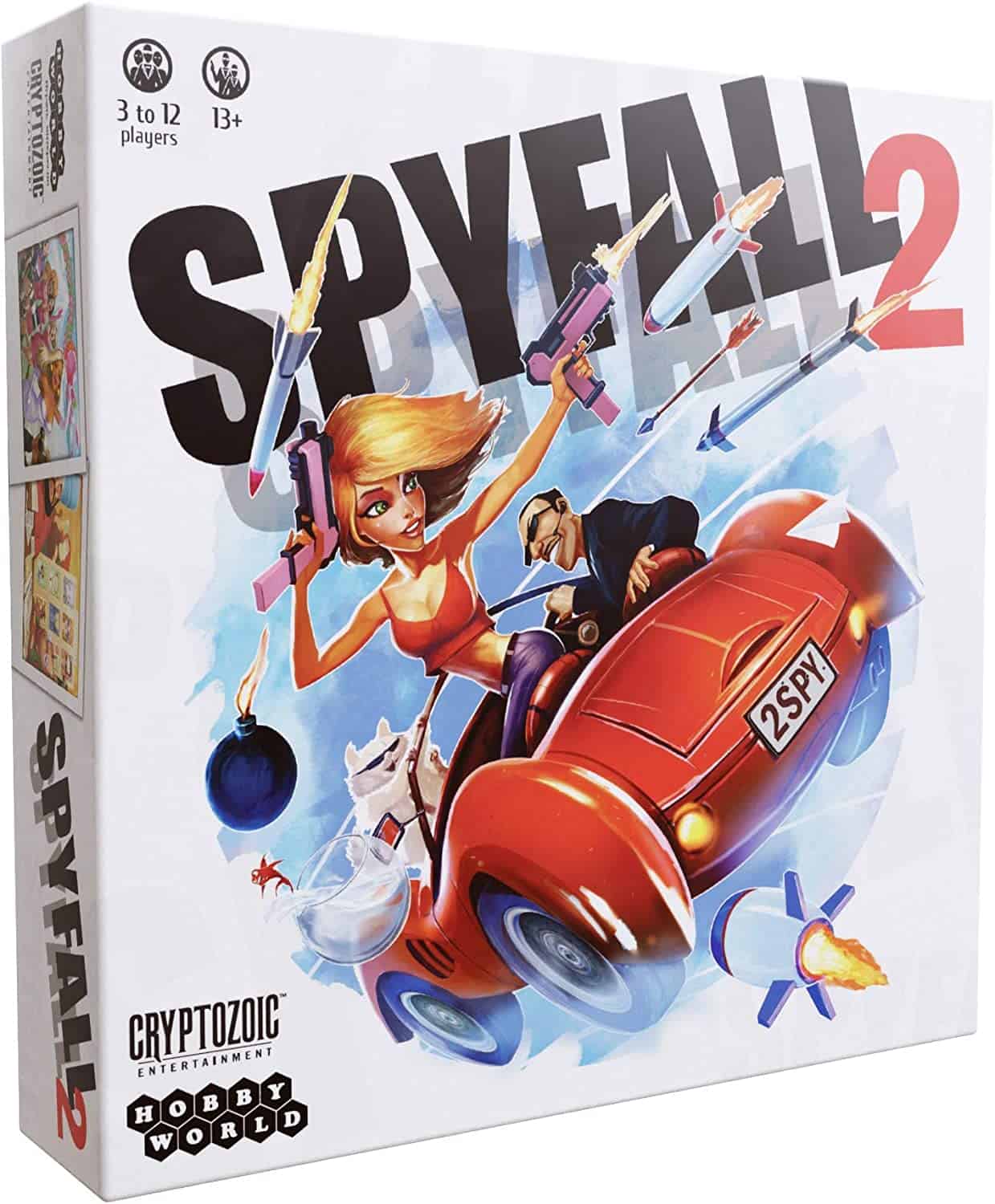
3 to 8 players (we recommend 5 or 6); ~10 minutes
Spyfall is another game where one person is trying to blend in. The objective for most players is to sniff out the Spy. As the Spy, your aim is to work out the location you’re in.
It’s similar to The Chameleon in gameplay, except players can ask someone else a question to work out if they’re the Spy. As a Spy, you use this to subtly deduce the location.
What I enjoy more about this game compared to The Chameleon is that you’re given a character, which leads to some hilarious answers if you ask more absurd questions. Like most games, the most critical factor is the people you play with.
Pros
- Each round isn’t too long
- Easier to blend in than The Chameleon (when you play right!)
- The better you play, the longer and more intricate the round
- Playing in character is the best, most engaging way to play
Cons
- After four or five rounds, you’ll want to move on to something else
- It doesn’t really work with anything other than five or six players
#5 Coup
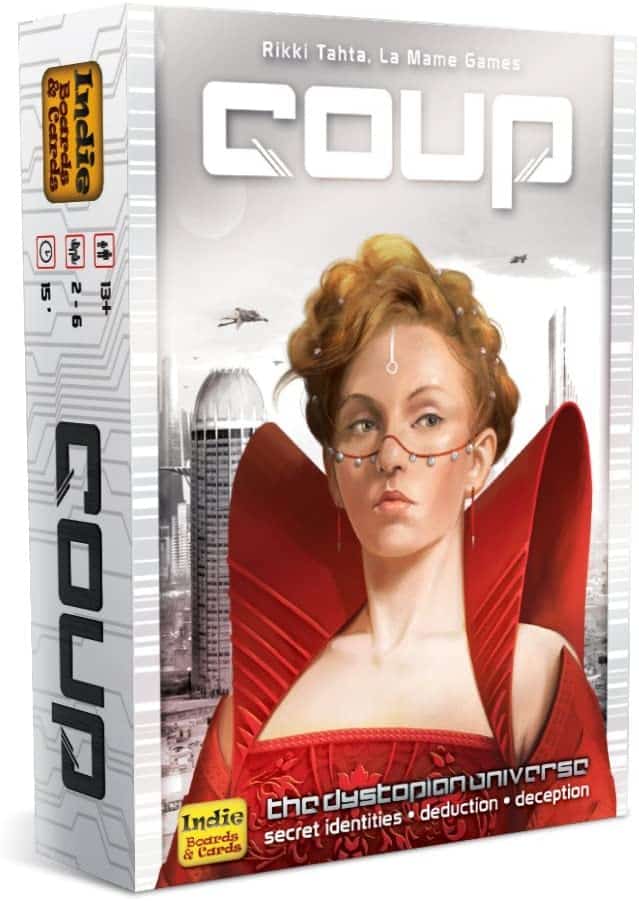
2 to 6 players; ~15 minutes
Coup is another bluffing game. You’re playing for yourself, and your objective is to be the last one left with power.
Each player is given two roles (face down). These let you take certain actions; however, nobody can tell who can do what when the roles are face down. That’s where the social deduction-ness comes in.
Similar to Cheat, you can call out fellow players. If you’re right, they lose a life; if you’re wrong, you lose a life. Simple.
You collect coins, aiming for seven. You can perform a ‘coup’ at this point, removing another player’s life.
There are 15 tile cards and three of each tile, so anyone could be bluffing – but there’s also a chance they have the role. It’s pretty tricky to know who’s telling the truth and who’s lying!
When a person loses a life (or influence), they must turn over one of their roles for people to see. A player may have claimed three or four roles over the game, either to perform an action or to block someone else’s against them. If they’re playing smart, you won’t know until their cards are revealed.
It’s better playing with the same people multiple times – you start to get a feel for your friends and read their tells.
Pros
- Faced-paced hidden-role game
- Best played with the same people multiple times
Cons
- It takes a few rounds to understand and learn the roles
- Working out who’s who is genuinely brainpower-sapping
- Any known liars will get immediately picked on (fair enough, if I’m honest!)
#4 Fake Artist

6 to 10 players; 15 to 20 minutes
In a similar fashion to The Chameleon, everyone in Fake Artist has crucial information except one player. The twist with Fake Artist is that there’s a given subject being drawn. The image is passed along, and you have to add something to it.
The best way to do this is to have one person put pieces of paper in a bag. The theme should be on all except one. Each player then draws one. This way, you can have a significant number of players without anyone knowing who the Fake is.
This can lead to some amusing twists, and if your art skills are anything like mine, anyone can be accused of being the Fake Artist. Familiar rules apply in that you have to try to root out the Fake Artist, and they have to guess the drawing.
Pros
- Great fun!
- Very cheap (you just need a pen and paper)
- Minimal setup needed
Cons
- It can get a bit repetitive – good for three or four rounds
#3 Mafia/One Night Ultimate Werewolf
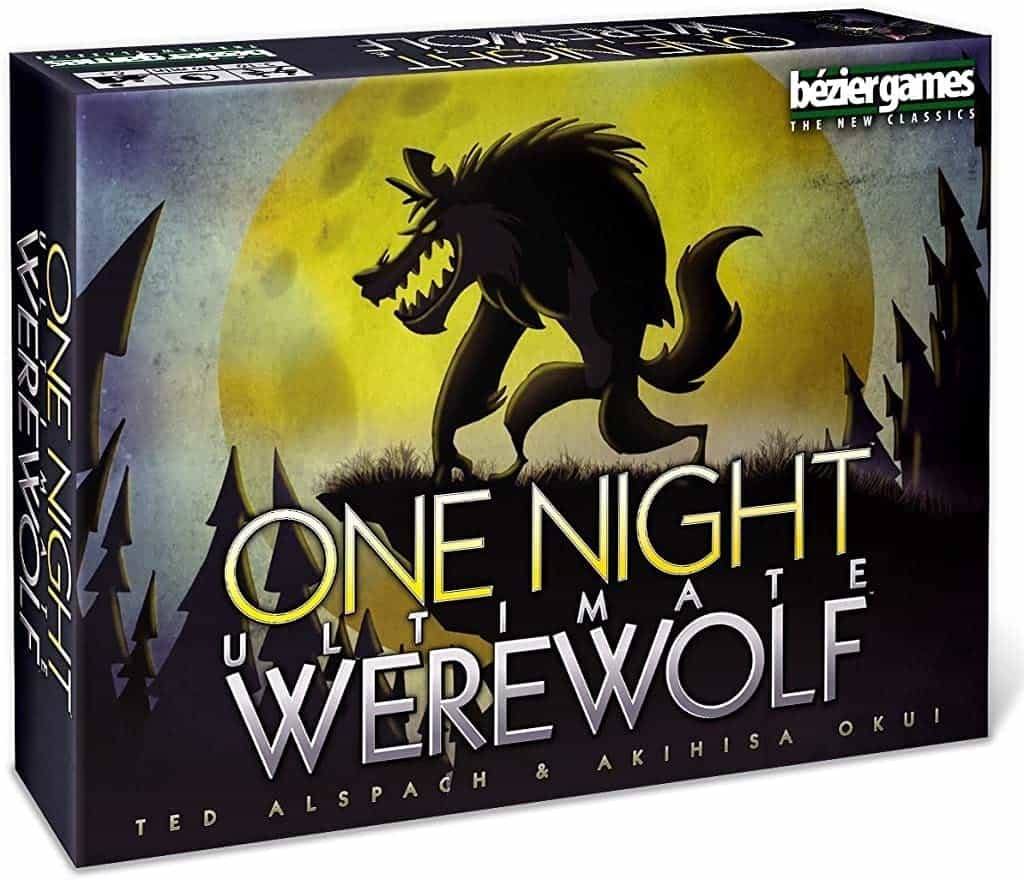
5 to 75 players (officially); 30 minutes to 75 minutes
Now, onto my top-tier games.
We always play Mafia or Werewolf as a big group game – at least twelve or thirteen people. It’s suitable for an icebreaker and getting almost everyone involved.
The core premise of both games is the same. A group of ‘baddies’ has to kill all the other players without being discovered. It’s clearly a compelling premise – games like Among Us and the TV show The Traitors have been so famous, and they’re precisely the same thing.
Each ‘night’, there’s a murder, and players vote on whether they want to accuse and kill anyone.
The part that makes these games so much more fun and varied is the additional roles you can add (as per the number of players). We usually play Mafia and use a regular deck of playing cards to assign characters. If you have One Night Ultimate Werewolf, it includes the additional roles and how to add them to balance the game.
We have played with as few as seven (definitely the minimum I’d recommend!) and as many as well over 20. It’s great to see people get so invested and competitive – and angry when they die and discover who the Mafia/Werewolves are.
Pros
- Rounds vary in length depending on the number of players
- Playing without revealing roles when you die adds an additional twist
- Extremely engaging for everyone still in the game
Cons
- Dying in the first rounds is really frustrating and dull, especially if you don’t play with a Medium
- People are required to follow basic instructions (‘open your eyes’; ‘close your eyes’; ‘point’). If one person messes this up (which often happens), the game could be ruined
- You need an excellent narrator to ensure things go smoothly
#2 Avalon/The Resistance
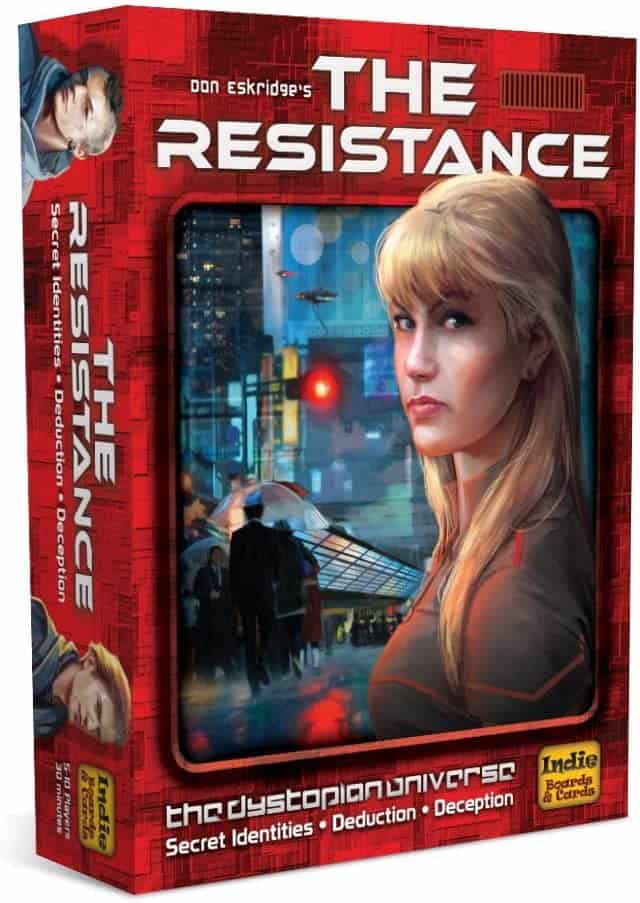
5 to 10 players; ~25 to 30 minutes
The Resistance is the original game, with Avalon being a Merlin-based spinoff. We prefer Avalon just for the engaging theme.
This game is the most similar to Secret Hitler – however, it’s much more straightforward. The objective is to pass missions if you’re good or cause tasks to fail if you’re evil.
Each player is given a role at the start of the game, and it is to remain secret. Please don’t show anyone else or drop your card on the floor. It’s so annoying to restart five times in a row!
A player then selects who on the table will go on a mission. It will either be passed (success) or fail (see the similarities to Secret Hitler?).
If three missions fail, the bad guys win.
Some missions skew the odds in either team’s favor, and you must play smart to win. Trick players into trusting you if you are evil, or prove your trustworthiness to go on more missions if you’re good.
After a basic game or two, you could add some additional roles. If you get the Avalon Big Box, there are 23 characters, each with different abilities. Yep. Once you get into it, it’s pretty great.
I could play Avalon with our group all afternoon. My favorite aspect is that each round adds to the last; you might learn how people play and adapt your playstyle to compensate.
Pros
- Friendly levels of high-stakes tension
- One of my favorite social deduction games
- Each round adds to the last as you learn each other’s playstyles
- Easy to play on repeat – we’ve easily played seven or eight matches in a row
Cons
- Easy for someone to make a mistake during the initial role setup
- Additional roles take a while to get familiar with
#1 Betrayal at the House on the Hill
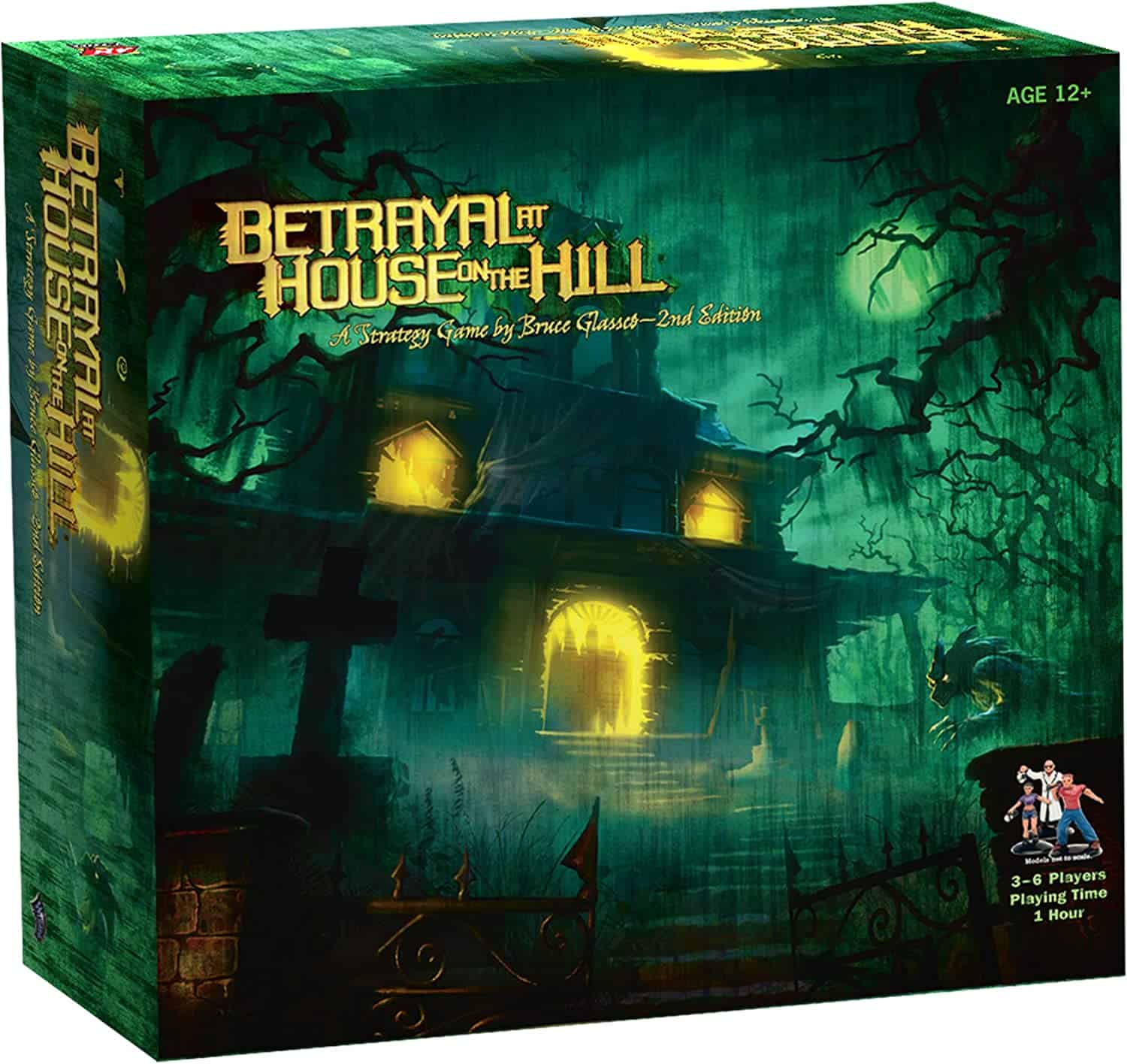
3 to 6 players; 60 minutes
For a slightly different Secret Hitler-style game, I’ve added Betrayal at the House on the Hill to this list. This is less of a social deduction game, but it will change from a cooperative to an asymmetric game.
I love that it’s so varied each time you play. Well, most times. The game changes at the midpoint. The group is usually split into two, with at least one player becoming the Betrayer.
The Betrayer has one objective and storyline to follow. In contrast, the other group has to try to escape in a specific way.
It reminds me of Secret Hitler in how everyone tries to sway the game in their own direction. It’s less subtle in most cases, of course.
The deduction comes in when you’re trying to determine the other side’s objective. You might have a rough idea, but you won’t know the winning conditions.
Then, you will need to problem-solve as a team to determine your critical players for this scenario. You might only manage one or two games in a night, but it’ll be different each time you play (unless you’re really unlucky).
The great thing about this game is that it changes massively, and there’s no way to know how it’ll go. With 50 possible scenarios, repeats are unlikely.
Pros
- Extremely enjoyable
- Easy to play three or four games (an entire evening) in a row
Cons
- Takes quite a long time to complete a round
- Maximum of six players without pairing up
Frequently Asked Questions
Question: What game is most like Secret Hitler?
Answer: Of all the social deduction games I’ve ever played, I’d have to call Avalon (The Resistance) the closest thing to Secret Hitler.
The premise is essentially the same for all these games. The ‘baddies’ try to foil the mission successes, while the ‘goodies’ want to succeed.
Question: Is Secret Hitler worth playing?
Answer: Absolutely. Our group has loved playing Secret Hitler, although our favorite game of that style is probably just about Avalon. And that’s purely for the theme, really.
I recommend Secret Hitler to anyone looking for a social deduction game, especially if they’re into their history.
Question: What’s the best way to bluff in a social deduction game like Secret Hitler?
Answer: Ah, I don’t want to give too many of my tips away. What if my friends read this?
Nah, just kidding. I think the best thing to do is divert all the attention onto someone else. I sometimes even pick one person and spend all my time watching them, pretending to figure out whether they’re ‘evil’. Sorry, Lucy.
Don’t be too quiet; don’t be too loud. If it helps, watch how innocents react when accused and mirror their expressions.
Hmm, what else? If you’re a ‘baddy’ with others on your team, you could even turn on them. It’s a risky call if the other person doesn’t get it, but it’s a surefire way to prove your innocence. (Your teammate still wins, even if everyone correctly guesses they’re on the ‘evil’ team!)
Conclusion
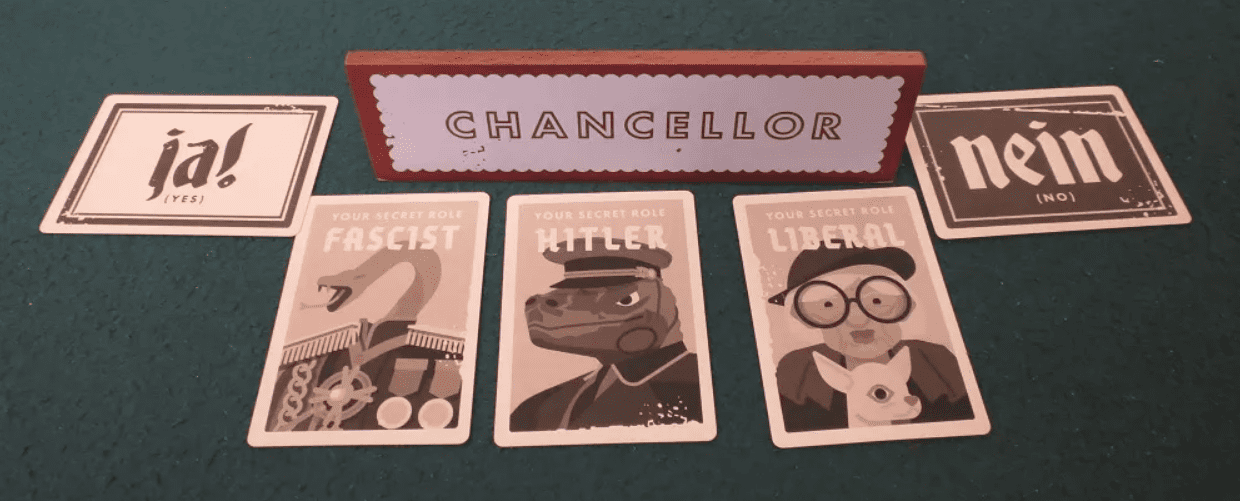
Well, thanks for sticking with me to the bottom of this page! I hope you’ve found my picks for the top Secret Hitler alternatives practical and perhaps inspiring to some degree.
Although different games float each individual’s proverbial goat, I’d recommend all the options I’ve put on this page. Each will get you thinking in a varied way and require a certain amount of satisfying concentration and deduction.
In general, my most important tip is to play with a good group of your friends who are board game enthusiasts. Most of them will only work well if they’re taken reasonably seriously (but not without sacrificing having fun!).
Recommended reads:
- Exit Board Game Guide
- Best Ticket to Ride Strategies
- A Complete Overview of Ticket to Ride New York
- Best Exit Board Games Ranked
- Terraforming Mars Guide: Fighting for Spaces in Space - April 22, 2023
- Zathura Board Game Guide - April 20, 2023
- Ark Nova Guide – Zoo Complex, Or Complex Zoo? - April 8, 2023


